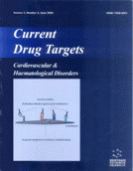Abstract
The two main causes of peripheral arterial occlusion (PAO) are embolism and thrombosis. Surgical treatment of acute limb ischemia, because of related complications, has a 30-day mortality rate of 15% to 25%. Intra-arterial thrombolysis for lower extremity ischemia is a well-accepted and frequently used technique. It may offer definitive treatment without the need for major surgery in a significant series of patients with acute occlusion of a native leg artery or a by-pass graft. Thrombolysis can offer several potential advantages when compared with surgical therapy. Thrombolytic agents include streptokinase (SK), urokinase (UK), pro-UK and recombinant tissue plasminogen activators (rt-PA-Alteplase and r-PA-Reteplase). All these agents induce a systemic fibrinolytic state. Three prospective randomized trials, ROCHESTER, STILE, and TOPAS, which compared thrombolytic therapy with traditional surgical revascularization for lower limb ischemia, have recently been published. They suggest that thrombolysis, as an initial therapy, reduces the risk of subsequent surgery and improves limb salvage for patients with PAO. Using this approach, the underlying lesions can be identified and treated by transluminal balloon angioplasty or stenting, or by elective surgical revascularization. However, severe bleeding is still a non rare complication of intra-arterial thrombolysis and the risk of intracranial hemorrhage is 1-2%.
Keywords: thrombolytic therapy, peripheral arterial disease
 9
9













